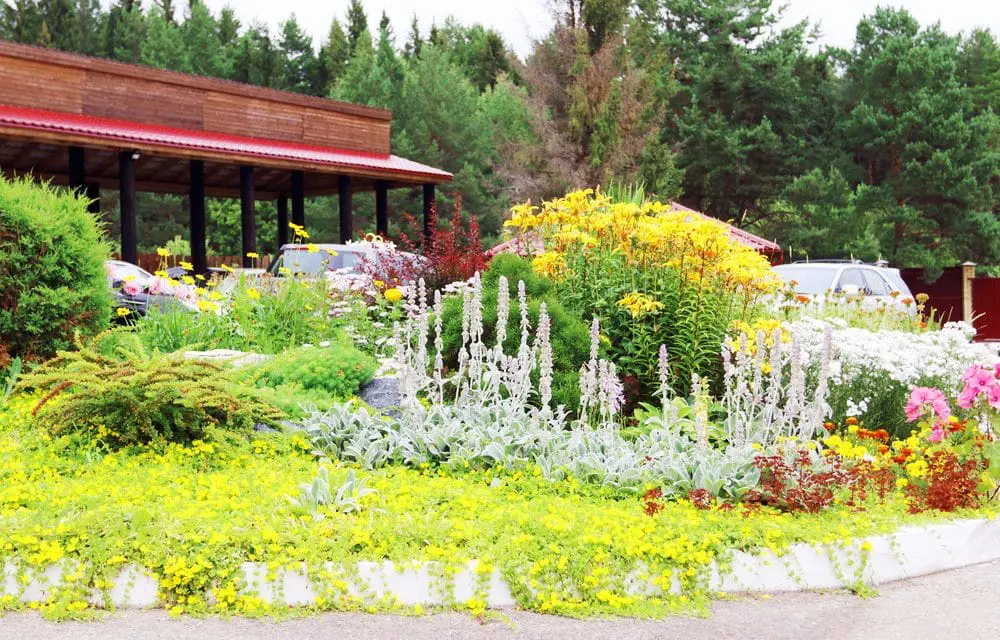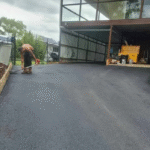Greywater is wastewater derived from domestic sources. These include sinks, showers, and even laundry appliances. This liquid resource can both nurture vegetation and help environmental sustainability.
By redirecting household wastewater, gardeners can simultaneously conserve resources and mitigate landfill contributions. The greywater becomes a catalyst for robust plant growth when strategically implemented.
Want to learn how? Then, read on!
What is Greywater?
Greywater originates from mundane domestic processes: dishwashing, bathing, and laundering activities. This nuanced liquid contains minimal contaminants and delivers potent nutritional compounds like phosphates and nitrates.
It offers a sustainable irrigation alternative for discerning horticulturists.
Distinguish between water sources carefully. Shower and bathroom basin runoff typically proves safe for irrigation. Kitchen water, full of oils and food residues, requires more careful screening before it is applied.

Choosing the Right Plants
To conserve water, you need to pick the right plants. Select drought-resilient specimens that excel in limited precipitation areas. Succulents, lavender, and rosemary stand as resilient botanical examples, thriving under austere hydration conditions.
Explore fruiting species like fig and pomegranate trees, which demonstrate extraordinary water-conservation capabilities and metabolic adaptability. This leverages sophisticated root systems to extract nutrients from difficult terrains.
Maintain strict protocols to prevent direct contact between recycled water and consumable plant segments, ensuring dietary safety.
Recognising different moisture requirements promotes savvy usage. Certain varieties need less hydration, making them ideal for this setup. Others necessitate more frequent watering, so choose wisely.
Local horticulture shops or online collaboration platforms can provide expertise and numerous insights. As a result, your outdoor space can prosper while treating the environment considerately.
Setting up a System
Establishing a water recycling system isn’t difficult, even for novice plumbers. Simply place a bucket under the sink or shower to collect runoff. It’s inexpensive and straightforward.
For DIY enthusiasts, PVC pipes and large containers can funnel water from your bathroom. Ensure everything’s sealed properly to prevent leaks.
Safely directing reclaimed water to your outdoor space is essential. Using eco-friendly materials keeps your vegetation happy and healthy.
Valves or diverters help channel the flow where needed without contaminating drinking water. Regular maintenance keeps your garden thriving.
Proper storage prevents unpleasant odours and bacterial growth. Try to use the collected water within a day to maintain freshness.
Check regularly for blockages or leaks. Keeping the setup clean helps it last longer while maintaining an attractive landscape.
Application Techniques
Subirrigation represents a cutting-edge water reclamation technique. By introducing moisture directly into soil substrates, this method dramatically reduces water loss and optimises plant nourishment.
This approach is notably efficient and promotes healthy growth. Alternatively, a watering can works well, but avoid contact with edible plant portions.
Frequency depends on the specific needs of your vegetation. Some require daily moisture, while others thrive with less frequent attention.
Observe how your garden responds. Yellow leaves or stunted development might indicate either excessive irrigation or nutrient deficiencies. Adjust your routine accordingly to maintain good health.
Rotating usage among different areas prevents soil overloading and ensures balanced distribution. This practice sustains a fulfilling and thriving outdoor environment through intelligent resource management.
Protecting Plant Health
As you implement reclaimed water practices, effective monitoring becomes crucial. Watch for indicators like scorched foliage, wilting, or slowed development.
These signs suggest quality imbalances. Regular inspections enable necessary adjustments. If the vegetation appears stressed, try reducing alternative irrigation or reintroducing standard water temporarily.
To determine which specimens thrive with recycled water, identify those showing robust growth and vitality. Keeping records proves invaluable—document quantities used, vegetation responses, and modifications made.
This information serves as a reference for understanding effective practices. Be mindful that adaptation takes time, requiring patience.
By tracking progress, you can make educated decisions to maintain a flourishing landscape.

Avoiding Common Mistakes
Proceed with vigilance when redirecting domestic water to gardening purposes. Steer clear of liquid contaminated with potent chemical agents that could obliterate your plants and your soil’s subterranean ecosystems.
Use only biodegradable products that maintain environmental integrity.
Select water sources carefully to prevent the spread of pathogens. Steer clear of toilet effluent and heavily soiled laundry water, which harbour dangerous microorganisms and toxic residues. Opt instead for shower drainage or basin runoff as safer irrigation alternatives.
Introduce strategic water management to also prevent nutrient overload. Carefully track soil moisture fluctuations, recognising the distinct hydration requirements of individual plant species. Maintaining equilibrium represents the cornerstone of a robust garden ecosystem.
Continuously expand your gardening expertise through diverse learning channels. Horticultural literature, specialised workshops, and digital forums provide rich reservoirs of advanced water recycling information.
Alternatively, you can always consult professional gardeners for advice.
Best to introduce any changes gradually. Learn through experience, trial and error, and watch your system evolve and become efficient. This will foster a deeper understanding of safe gardening without endangering your vegetation or personal well-being.
Saving Money with Greywater
Recycling household water offers concrete financial benefits for homeowners. A well-designed greywater system can significantly reduce water bills while maintaining a healthy garden. Even modest DIY implementations can generate meaningful long-term budget improvements.
Local councils are increasingly supporting water recycling efforts. Many now provide incentives and rebates for homeowners who implement sustainable water management practices.
These programmes help offset initial setup costs while reducing strain on municipal water infrastructure.
Neighbourhood Water Solutions
Community gardens are discovering the power of shared water resources. Neighbours can collaborate to collect and distribute greywater across multiple plots.
This approach reduces individual water consumption and builds stronger local connections. It also turns water recycling into a collective effort that benefits entire neighbourhoods.
Conclusion
As you see, using greywater for cultivation offers plenty of benefits. Beyond that, it also promotes environmental sustainability. To ensure your garden thrives, though, monitor your vegetation and address any issues promptly.
Lastly, remember that using greywater is not just a wise choice. It’s the responsible choice that ensures the planet’s future. Through it, you can make meaningful changes not only for your family’s budget, but also for your local environment.
Good luck to you and happy gardening!





